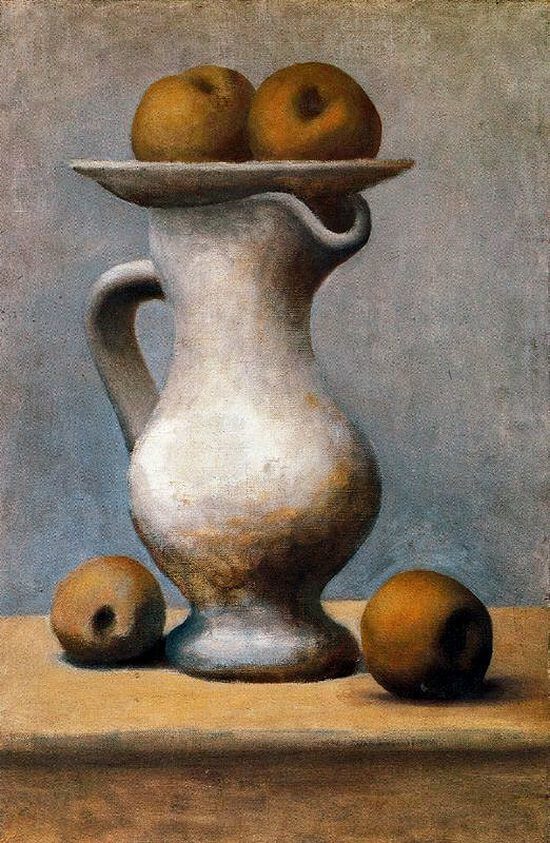Still Life with Pitcher and Apples, 1919 by Picasso

This still-life was discovered only after the painter's death. The composition is extremely simple - four apples, a pitcher, a plate - without any decor or personalized objects. It alludes to no season and to no particular place, and this gives it a universal character. The arrangement of the objects makes no practical sense: two apples on the sideboard on either side of a pitcher, on top of which is a plate with two more apples.
The rusticality and simplicity of this still-life contrasts with the abundance to which art history has accustomed us. The chalky colours - grey and beige - recall frescoes in Pompeii and Herculaneum. Picasso probably visited these sites during his trip to Rome in 1917.
With these simple forms and the monumentality of the pitcher in the middle (a frequently recurring object in his paintings), Picasso was fully in line with the return to classicism then in vogue. In front of this silent composition, it is impossible not to think of the metaphysical still-lifes of Paul Cezanne.
Nevertheless, there is something disquieting here. Against the neutral background, the pitcher may also be seen as a female figure with generous forms: with her voluptuously open mouth and the generous swelling of the highlighted belly, this pitcher-woman is as erotic and colossal as the giantesses painted during the same period.
Picasso again uses a classical idiom and interprets it in his own way. The elaboration of the composition shows a very Cezannesque handling enriched by the Cubist experience. The image of a woman's body, which emerges where no one would have expected it, has not been downplayed ; on the contrary, it is overwhelmingly present and sensual.
















